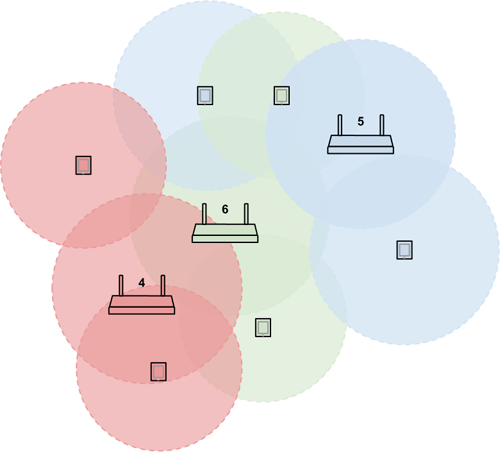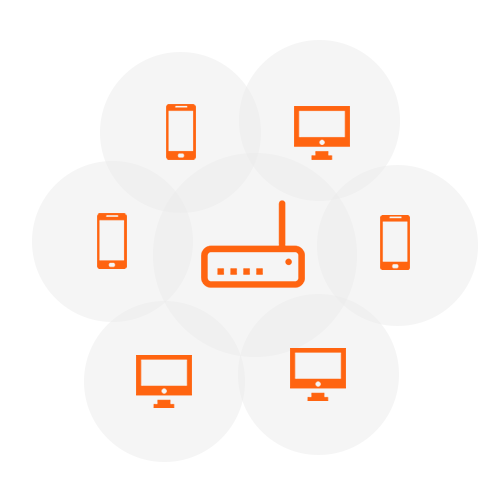Explaining the impact of signal congestion on Wi-Fi connectivity
High performance Wi-Fi is dependent on clear signals from routers and access points. When Wi-Fi is congested, users face slower speeds, frequent disconnects and reconnects, or even an inability to connect at all.
Here we look at the two main causes of congestion for Wi-Fi in offices and buildings.
Adjacent channel congestion
Adjacent channel congestion, which happens when many signals cross over at once, is the most problematic type of Wi-Fi interference.
One way of thinking about this is trying to hear people speak while a band is playing at a concert. If you and your friends are shouting to be heard over the band, and your neighbours are doing the same, you may be able to hear your neighbours and the band but not your friends.
This is exactly what happens to wireless devices trying to communicate in a congested environment – too many signals result in weakened connectivity, creating an inability for anyone to connect to their own Wi-Fi device effectively.
This diagram shows the signal conversation scenario when Access Points (Aps) on channel 4 (red), channel 5 (blue), and channel 6 (green) are all active at once. As one of these APs tries to talk to its clients, its communication is interrupted because of the noise of the other two. This harms the performance of all the networks.

Co-Channel Congestion
Co-channel congestion can be illustrated by congestion caused by lane closures on a motorway.
If you’re in your car in the outside lane, and all three lanes are being filtered down to one lane for roadworks, traffic will slow and eventually come to a halt. After a long wait in the queue, you finally get past the roadworks to continue your journey.
Co-channel congestion works in a similar manner: the performance is hindered by wait times due to too many signals. The system manages the bandwidth and every device connects eventually, but has to wait for a chance to talk to its associated Access Point.
The diagram below depicts a wireless access point and its associated clients, which can only talk one-at-a-time.
